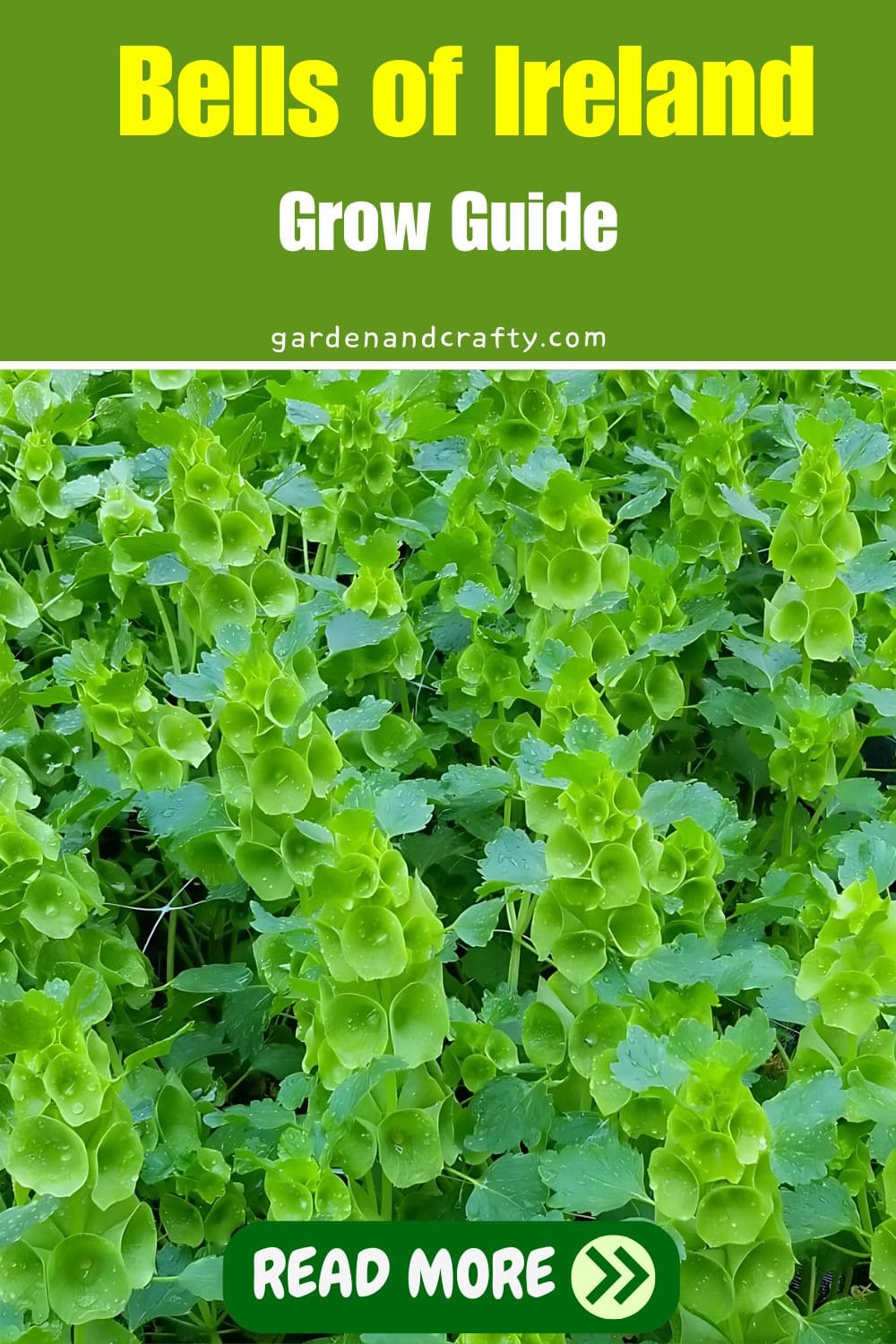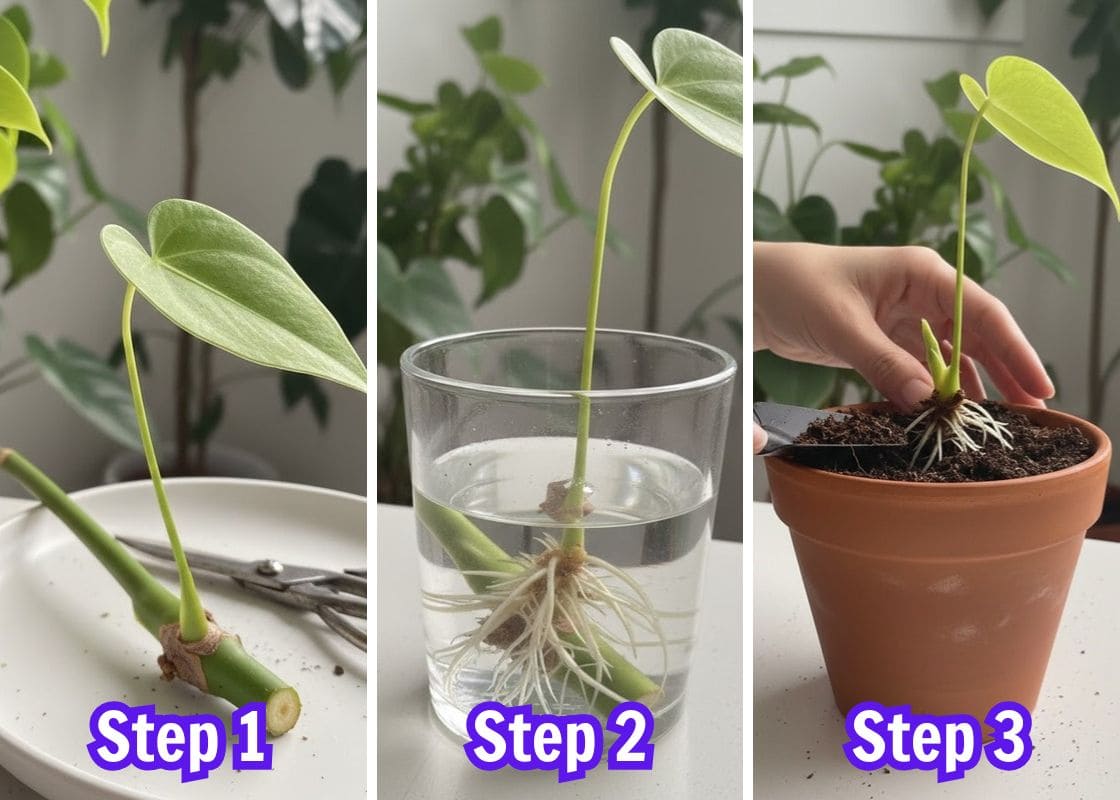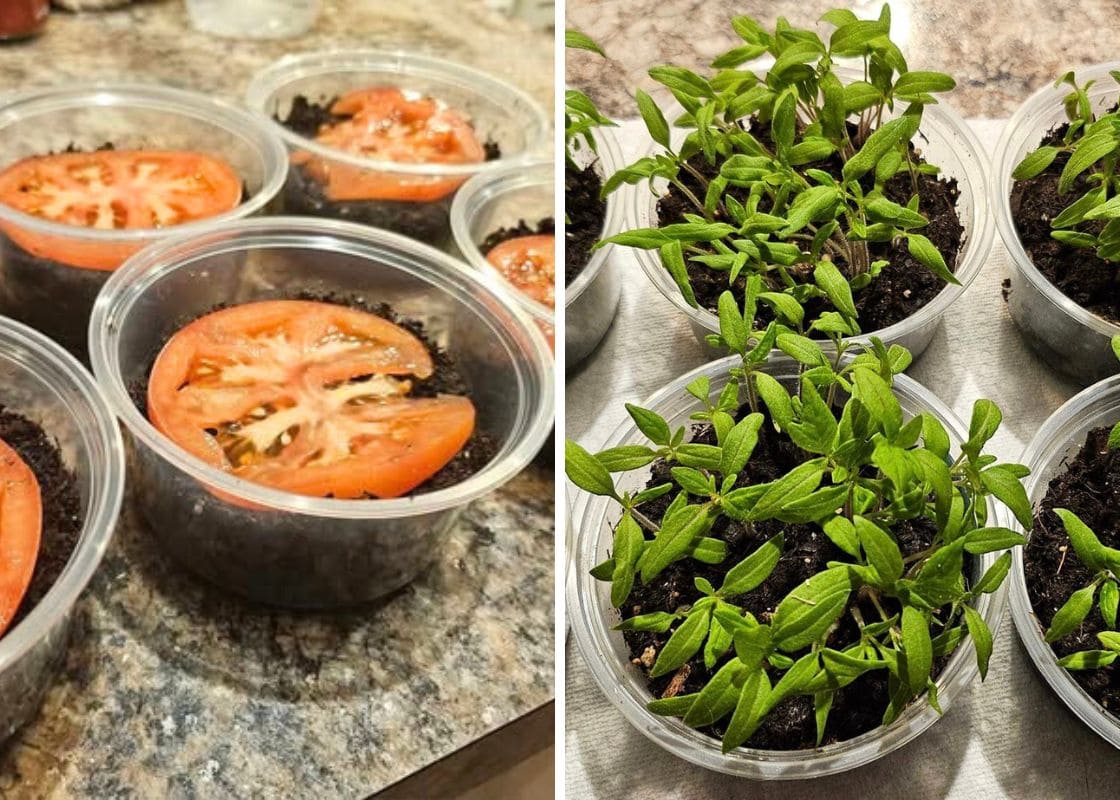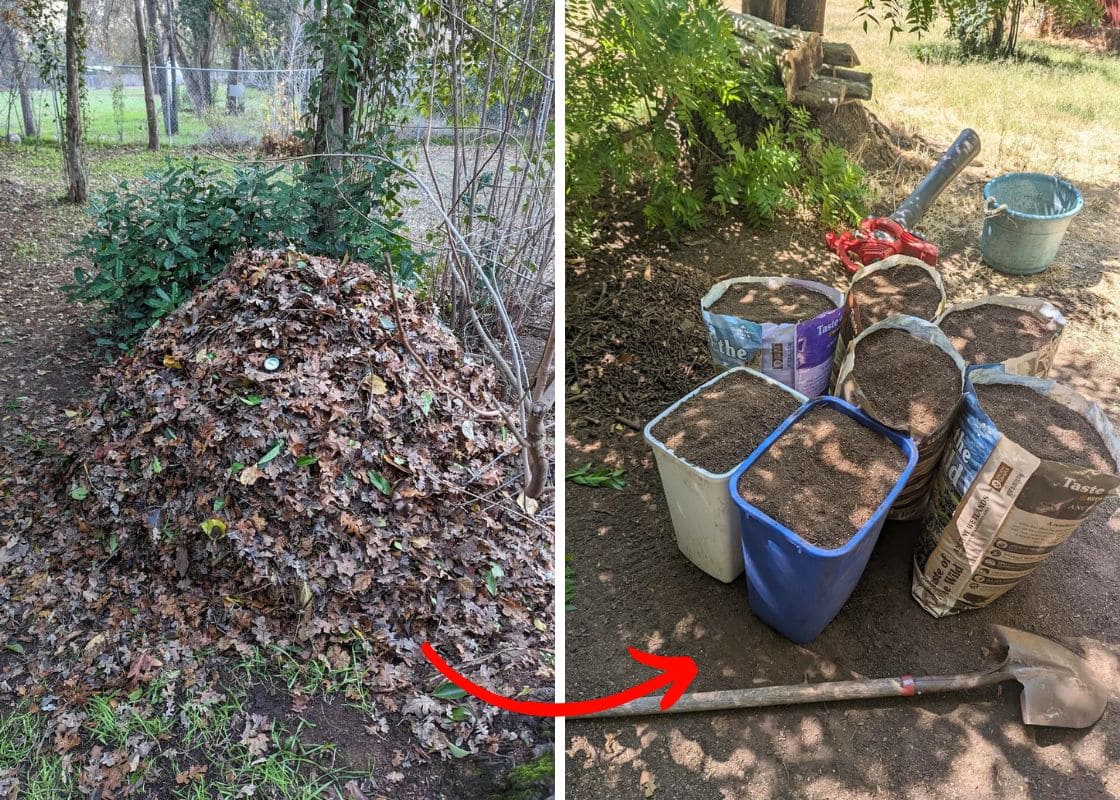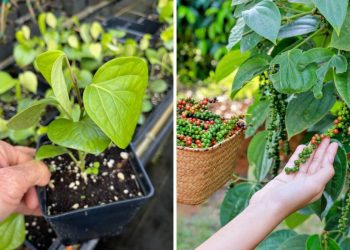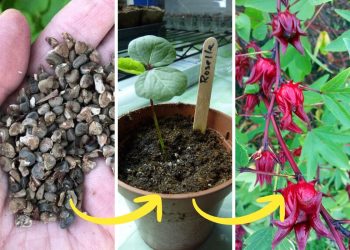Did you know that bells of Ireland are the symbol of Saint Patrick’s Day? Their green color, combined with small white flowers, symbolizes good health, luck, and happiness.
Blooming from late spring to early summer, they grace gardens with their unique charm. Their flowers are tiny and inconspicuous, nestled within vibrant green, cup-shaped bracts.
These flowers are popular at weddings. Imagine you take bells of Ireland flowers and enter your wedding ceremony. There’s nothing better than holding the bouquet grown by yourself.
Summary:
- Bells of Ireland is known for their tall spikes adorned with bell-shaped green calyxes.
- They thrive in fertile, well-draining soil under full sun to partial shade.
- You need to water regularly to keep the soil moist, provide support for tall stems, and prune spent blooms.
| Scientific name | Moluccella laevis |
| Common names | Bells of Ireland, shellflower |
| Plant type | Herbaceous annual |
| Height | 60-90 cm |
| Flower shape | Bell-shaped calyces |
| Leaf shape | Ovate |
| Soil type | Well-drained, sandy or loamy |
| Bloom time | Summer |
| Habitat | Gardens, meadows |
| Native range | Western Asia |
Propagation (From Seeds)
As I prepare for the next gardening season, I collect seeds from mature Bells of Ireland plants in late summer to early fall.
Carefully gathering dried flower heads, I gently shake them over a container, releasing the tiny seeds. These seeds are stored in a cool, dry place and await to be planted.
Growing Bells of Ireland
Preparation
When preparing to grow bells of Ireland, you should choose a sunny site for optimal sunlight.
Besides, you can improve heavy clay soils with compost or sand for better drainage or add organic matter like compost or manure enriches the top 6-8 inches of soil.
To boost germination, lightly scarify the seeds with sandpaper and cold stratify them in a damp paper towel in a sealed bag in the fridge for 1-2 weeks.
How to Grow Bells of Ireland
As you embark on starting bells of Ireland indoors, begin 8-10 weeks before the last expected frost date.
Choose seed trays or small pots filled with a sterile, well-draining seed starting mix, creating a cozy bed.
With a gentle touch, sow the seeds on the soil surface, lightly pressing them in for good contact without burying them deeply; they crave light to sprout.
You should keep the soil moist but not soggy and maintain a temperature of 65-70°F (18-21°C) to encourage robust germination.
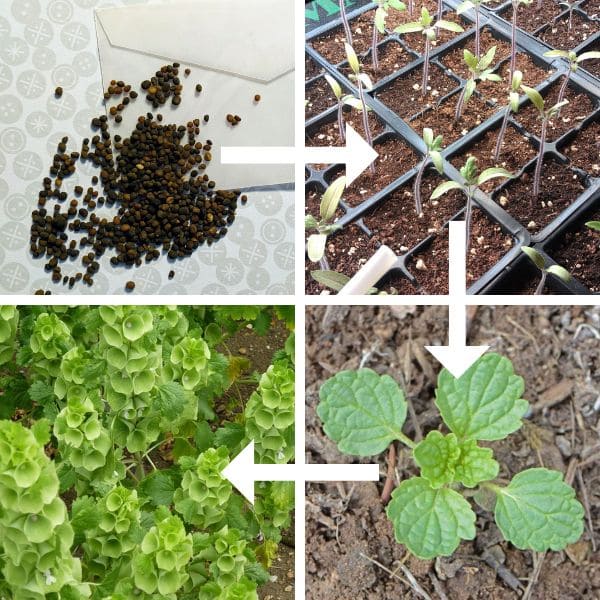
About 1-2 weeks before transplanting outdoors, toughen up your seedlings by gradually introducing them to outdoor conditions.
After the last frost has passed and the soil is warmed, transplant them into your garden, spacing them 12-18 inches apart to give each plant room to flourish.
For enhanced productivity, you can consider planting bells of Ireland alongside marigolds and basil, fostering a natural balance against pests.
Care for Bells of Ireland
Here are the main care requirements for growing Bells of Ireland successfully:
- Thrive in well-drained, moderately fertile soil neutral pH of 6.0 to 7.0.
- Prefer full sun (6-8 hours per day).
- Apply 1 inch of water per week.
- Thrive in USDA zones 2-11.
- Apply a balanced, water-soluble fertilizer (10-10-10) every 4 to 6 weeks.
- Regularly deadhead spent flowers.
Light
Bells of Ireland thrive best in full sun, needing at least six hours of direct sunlight daily. In hotter climates, they can tolerate partial shade to prevent leaf scorch.
In shady locations, the plants may become leggy and require staking for support to maintain upright growth.
Soil
This plant thrives in well-drained, moderately fertile soil with a slightly acidic to neutral pH (6.0 to 7.0).
Amending the soil with compost or organic matter enhances fertility and drainage, providing an optimal environment for healthy growth and vibrant blooms.
Water
Keep Bells of Ireland consistently moist, especially during the seedling and transplant stages. Use soaker hoses to avoid water-logging, providing about 1 inch of water per week.
Temperature and Humidity
Bells of Ireland prefer cooler temperatures and can tolerate light frosts, thriving in USDA zones 2-11. They benefit from good air circulation to prevent humidity-related diseases.
While they enjoy cooler climates, they can still perform well if protected from extreme heat and excessive humidity.
Mulch
Apply a 2-3 inch layer of organic mulch, such as straw, compost, or wood chips, around Bells of Ireland.
Mulching helps retain soil moisture, suppress weeds, and regulate soil temperature. Ensure the mulch is kept away from the stems to prevent rot and promote healthy growth.
Pruning and Deadheading
The best time to prune is early spring, just before the growth surge. Cutting stems back by one-third to promote a bushier plant structure.
In late fall, you should cut back the stems to the base at a 45-degree angle to prepare the plant for the next growing season.
Fertilizer
Apply a balanced, water-soluble fertilizer (10-10-10) every 4 to 6 weeks during the growing season to provider.
Also, you need to ensure even application and avoid over-fertilizing to prevent excessive foliage growth at the expense of flowers.
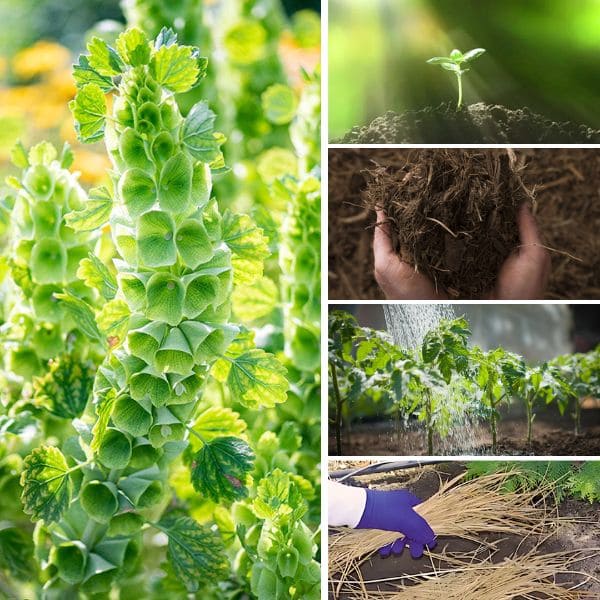
Pests and Diseases
Aphids and spider mites suck sap from the plants, causing distorted growth and yellowing leaves, while slugs chew irregular holes in the foliage.
So, you need to control these pests immediately with insecticidal soap, miticides, or organic slug baits.
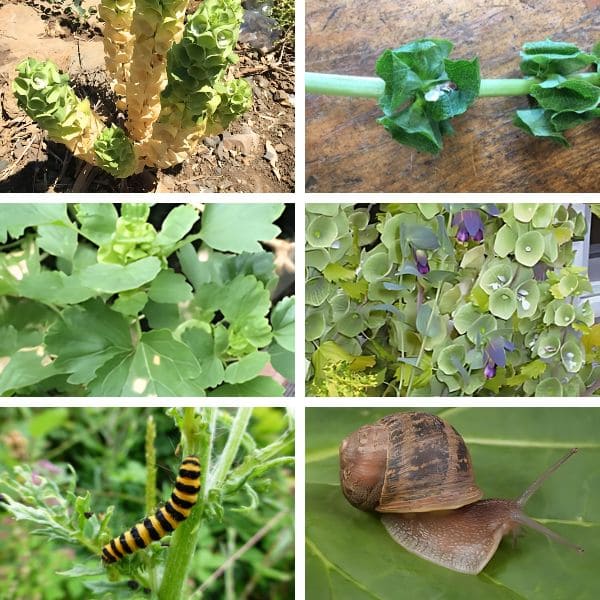
Besides, powdery mildew appears as a white coating on leaves, and root rot causes wilting from waterlogged soil.
Your plant can suffer from dark spots on leaves. So, if you don’t want these diseases happen, ensure good air circulation and avoid overhead watering.
Common Problems
Poor Germination
Bells of Ireland seeds sometimes have low germination rates. To improve germination, stratify the seeds by chilling them in the refrigerator for a week before planting.
Flopping Stems
The tall, thin stems of Bells of Ireland can become leggy and flop over, especially in shady locations.
Provide full sun exposure and use stakes or supports if necessary to keep them upright.
Yellowing Leaves
Yellowing leaves can be a sign of overwatering or poor drainage. Ensure the soil is well-drained and reduce watering if the soil remains consistently wet to prevent root rot.
Poor Flowering
Insufficient sunlight and excessive fertilization can lead to poor flowering. Ensure the plants receive full sun and avoid over-fertilizing, which can result in lush foliage but fewer flowers.
Harvest
After about 100 days, you can harvest bells of Ireland in the summer to early fall. Cut stems early in the morning at a 45-degree angle above a leaf node.
Immediately place them in lukewarm water and remove any submerged leaves. Fresh Bells of Ireland can last up to two weeks in arrangements.
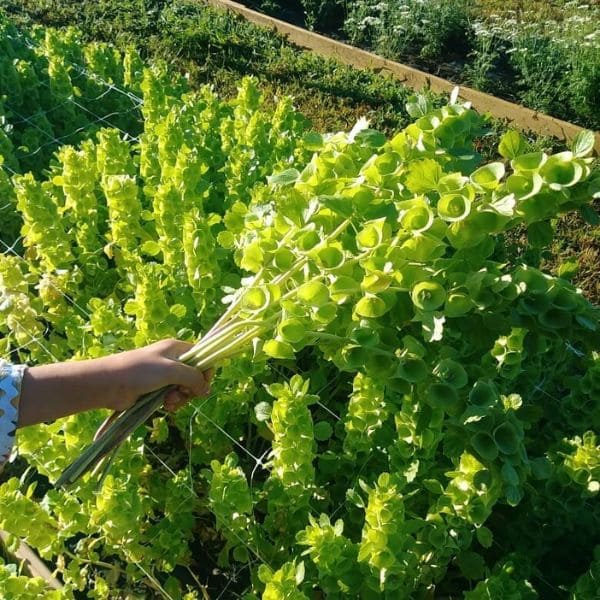
Preservation
Cut the stems when flowers are fully open. Strip the leaves, bundle the stems, and hang them upside down in a dark, ventilated area for 2-3 weeks.
Tips: Spray paint stems gold or silver to make your arrangements interesting.
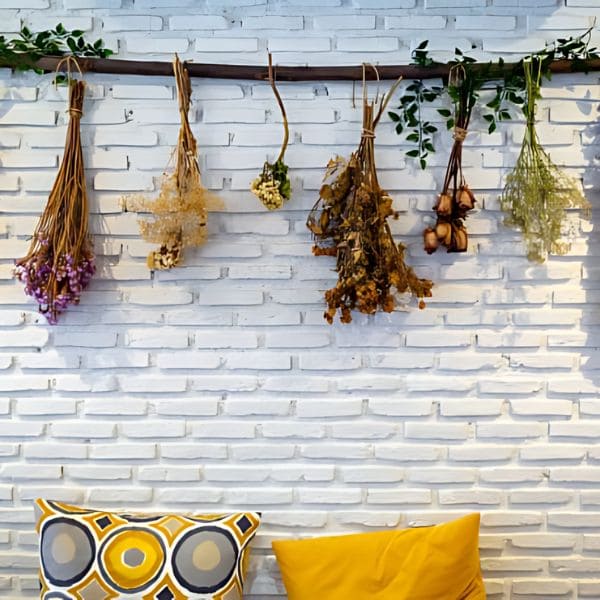
FAQs
Can you grow Bells of Ireland from a cutting?
Bells of Ireland are typically grown from seeds, but they can also be propagated from cuttings taken in late spring to early summer.
Do Bells of Ireland come back every year?
Bells of Ireland are annuals in colder climates but may self-seed and come back as volunteers in favorable conditions.
Can you root Bells of Ireland in pots?
Yes, Bells of Ireland can be rooted in pots filled with well-draining soil and kept indoors until they develop roots.
What do Bells of Ireland smell like?
Bells of Ireland have a subtle, fresh fragrance reminiscent of herbal or grassy notes, making them a delightful addition to bouquets and gardens alike.
